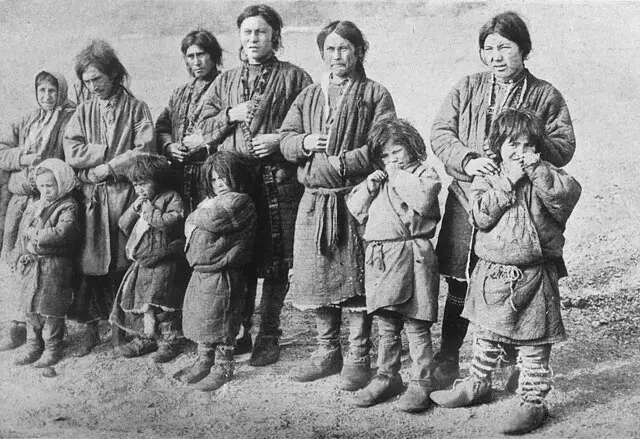Imagine speaking a language so rare, so old, that no one knows quite where it came from. A language with no close relatives. A language that might be the last whisper of an ancient people who once stretched from Siberia to North America. Now imagine that only a few dozen elderly speakers are left, scattered across some of the coldest, most isolated terrain on Earth.
That’s the Ket language. And its story is haunting, strange, and oddly poetic.
Frozen Rivers, Forgotten Words
The Ket people live along the Yenisei River in central Siberia, in small villages tucked between the forests and tundra. Their ancestors were nomadic hunters and fishers. Think canoes carved from birch trees, reindeer hides, shaman drums. They didn’t build cities or empires. They didn’t leave monuments. They left songs. Myths. And a language that refuses to neatly fit into any known family tree.
Linguists have called Ket a “language isolate,” meaning it has no known siblings. It’s like finding a single puzzle piece that doesn’t match any of the boxes. Some researchers believe it might be related, distantly, wildly, to the languages of Native Americans, especially the Na-Dene group spoken in parts of Alaska and Canada. If that’s true, it could mean the Kets are linguistic cousins of ancient peoples who crossed the Bering land bridge thousands of years ago.
But that theory, like much of Ket history, is still wrapped in mystery.
Not Just Words, But a Way of Seeing
Languages shape how we think. That’s not just a poetic idea. Studies show that languages influence memory, perception, even how we understand time and space. Ket is full of sounds and structures that don’t map easily onto English or Russian. It uses tones, like Chinese. It stacks up suffixes like Lego bricks. It has words for things we don’t have words for.
There’s something kind of heartbreaking about that. Not just because we might lose a rare language, but because we might lose a way of being in the world.
And let’s be real. Ket is not thriving. In the Soviet era, Ket children were taken to boarding schools where they were punished for speaking their language. Generations grew up speaking only Russian. Today, estimates suggest there are fewer than 50 fluent speakers left. Most of them are elderly.
Why Should Anyone Care?
It’s a fair question. There are thousands of languages in the world, and hundreds of them are endangered. Why should we care about one more slipping into silence?
Maybe because language isn’t just communication. It’s culture. Memory. Humor. Identity. It’s the difference between saying “snow” and naming ten kinds of snow because you’ve lived through ten thousand winters.
And maybe it’s also about humility. The world isn’t ours to simplify. Not every voice fits into a spreadsheet. Some of them hum quietly at the edges of maps and timelines, reminding us that history is weirder, deeper, and more beautiful than we usually admit.
What Can Be Done?
There are small efforts to revive Ket. Some linguists have spent decades working with the remaining speakers to document the language. There are audio recordings, dictionaries, even a few children’s books. But revitalization is hard, especially in places with little funding and lots of logistical nightmares.
Still, the fact that anyone is trying is something.
Maybe the most powerful thing we can do, those of us who live far from the Yenisei River and don’t speak a word of Ket, is to care. To listen. To not look away.
Because if a language dies, and no one notices, what does that say about us?
Sources:
1. Endangered Languages Project: Ket
2. The Guardian: “Ket: A Siberian Language on the Brink”
3. Smithsonian Magazine: “What the Ket Language Tells Us About Human Migration”

